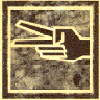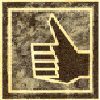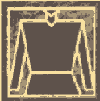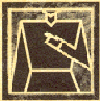- System Changes
- The System
Welcome (home)
Recent Events
History
System Changes
Character Creation
New Players Guide
![]()
Anatomy of a LARP
![]()
Hotel Information
![]()
Influences
Influences p2
![]()
XP Points
Old News
![]()
JMR Mailing List
JMR Guestbook
Registration
![]()
Pictures from Fianchetto
![]()
Pictures from Opening Moves
Vampire Links
Write Us
| The Challenge | Who Goes First | Surprise | Weapons | Hand Signals | Mob Scenes | Dealing & Soaking Damage | |
The Challenge
Now we move on to the actual dynamics of the system. In order to resolve a dispute between two or more characters those characters involved engage into a Challenge. The Challenge works like this:
Ken of Clan Brujah is going to knock the crap out of Steven the Ventrue. So Ken says to Steven "Physical Challenge". At this point Steven has two choices: He can Relent, which means that he will allow Ken to punch him in the face (He is not really hitting the player he is pretending to hit the character) or he can fight back (pretending to fight back). Steven chooses to defend himself. So the challenge begins. Ken begins by naming a trait that is appropriate to the Challenge, i.e. since he is going to take a swing at Steven he needs to bid a Dexterity based Physical trait. In response Steven bids a trait dexterity based trait as well (if he does not then he forfeits the challenge).
Now at this point they both turn around and then play a game of Rock, Paper and Scissors. (Rock beats Scissors, Scissors beats Paper, Paper beats Rock). Now this can have a few outcomes. The first outcome might be that Ken the Brujah wins, if so he gets to inflict damage onto Steve the Ventrue. If Steve the Ventrue wins then he deals damage to Ken (now keep in mind that who ever wins the Challenge gets to do what they wanted to do). If they tie, i.e. if the both have thrown the same thing (Rock, rock. Paper, paper. Scissors, scissors), then they both compare traits in the appropriate category (in this case with Ken and Steve it would be Physical). The aggressor states his total first. Ken and Steve tie, they compare traits with Ken announcing his total first (you can hide the your true total number of traits by stating an amount less then your total).
So Ken has a total of Ten (10) Physical traits. He calls that he has eight (8), he wants to keep his true total a secret but he is taking a chance because if Steve has more than eight (8) Physical traits Ken is going to lose the challenge. Note: You cannot call more traits then your character has, that would be cheating. Steve calls seven (7). Eight is greater than seven so Ken gets to deal damage to Steve i.e. he wins the challenge. Since Steve lost the challenge he has the option of Re-Testing. When you Re-Test you are calling upon your skills in the appropriate situations to get another chance to win. Steve has a Brawl of two (2). This means he knows how to fight and in game terms he should have another chance to block that punch or kick. Since Steve lost the challenge he loses the trait that he bid. Now he decides to Re-Test, he can only do this two times since he has a brawl of two.
You can Re-Test any challenge (as long as you have the appropriate ability) as many times as you have that ability. Note: Once you start with one Ability in a challenge you cannot use another. For example if you Re-tested with Subterfuge then you cannot Re-Test with any other ability during that challenge unless told to do so by a Narrator or the StoryTeller.
The "Challenge" works the same way for Social and Mental Challenges. Just remember that you need to go through the same steps that are part of the Physical challenge.
Another part of the "Challenge" to remember is that if both players tie and have the same number of traits then the Defender wins. This goes for any challenge Mental, Social and Physical. It only goes to the character that did not initiate the challenge and is defending. If both characters are going offensive (meaning that they are both trying to do damage to the other) then if they tie nothing happens. Both parties lose the trait they bid.
Return to Top
Who Goes First
In the order of things certain Trait categories go before others. The order goes Mental, Social and then Physical.
Example: Steve the Ventrue is going to Dominate Ken the Brujah, however Ken the Brujah wants to pound Steve's face in. So in order to determine who goes first we look at what actions they are going to perform: Steve is performing a Mental action and Ken a Physical one. So, Steve would go first because his action is a Mental one.
Return to Top
Surprise
When a character sneaks up on another it is called surprise. Surprise works like this: If a character initiates a challenge and the character who the challenge is for does not respond in three seconds then that character is surprised. Some Disciplines can cut this time down and give the other characters less time to respond.
Return to Top
Weapons
Weapons like in real life make it easier to injure others. In the game this is represented in the form of traits and damage. All weapons have positive traits and negative traits as well as the amount of damage the weapon does. All weapons are represented on index cards.
Return to Top
Hand Signals
Hand signals are a very important tool in a live action game. They inform other players of your actions, and they allow you to do things in game, depending on your disciplines, and most importantly, they are used in challenges. Here are the following hand signals that are used in this game in accordance with their disciplines and uses:
Challenges use the following hand signals: Rock, Paper, Scissors, and The Bomb. The following are what the hand signals look like: Heightened Senses
Whenever you are using the Discipline of Heightened Senses, whichever of the five senses you would normally use, you display a thumbs-up sign. Either hand is fine, and can be used in a variety of ways. For example, if you have heightened senses, and a conversation is going on across the room that you want to listen is on, you can raise your thumb, and stand where the conversation is taking place, while in game your character would actually still be across the room. This Discipline does not work if there are loud noises going on between you and the conversation, and you should never use this during gunfire, as you will then be deaf for up to an hour.
You can also use this Discipline for sight to see people moving with Obfuscate.
This will only work if you have an equal, or greater level of Auspex than the target has in Obfuscate. Additionaly, you MUST have Heightened Senses active before they enter your presence. (*Note: This means that just because you, the player, sees someone walking by in Obfuscate, you CAN NOT turn on Heightened Senses and call a challenge. This is cheating by using OOC information.) An example is as follows: Jim the Nosferatu walks into a room Obfuscated. He has 3 levels of Obfuscate. Amy the Toreador has 3 levels of Auspex. She did not have Heightened Senses on, therefore, she does not detect Jim. If at any point in time while Jim is still in the room Obfuscated, Amy turns on her Heightened Senses for whatever reason (not cheating because the player sees Jim Obfuscated, ie to eavesdrop on a conversation), then Amy must follow the rules to see if she can detect Jim while he's Obfuscated. Note that even Heightened Senses sound will alert Amy that something is amiss as she can hear Jim moving. Then, she can attempt to see him. Any high level of stimuli encountered while using Heightened Senses will render the user unable to use the sense affected for at least 15 minutes depending on the magnitude of the stimuli.
The Garou Gift of Heightened Senses acts exactly as the Vampiric Discipline.
Obfuscate
When using Obfuscate, unseen presence, you must cross your arms over your chest. This lets other people know that, while you are actually standing there, your character cannot be seen. As long as your arms are crossed, you are considered in Obfuscate, but if you drop your arms, you can be seen. This must also be used if you are using the discipline Cloak the Gathering, as well as any players you have cloaked.
The Umbra
Players who have stepped into the Umbra must use this hand signal to inform other players that you are not actually VISIBLY there in game. This hand signal is one arm crossed over your chest, not two, and must also remain up for the duration of your being in the Umbra.
Telepathy
This hand signal is used when you are using the discipline Telepathy. This informs players that you are talking to someone telepathically, and cannot hear the conversation. The hand signal for this is either hand, pointer finger or pointer finger and thumb pressed against the temple.
Majesty
If you have Presence up to Majesty, this is the hand signal you use. Simply spread your arms by your sides. This informs players that you have majesty, and as such, must treat you accordingly. It is not necessary to keep your arms out from your sides continually, as long as the players in your vicinity are aware of it. You may have to repeat this a few times as new players enter the scene. You must inform other players, however, if you choose not to raise your Majesty, if they already know that you have it.
Return to Top
The Mob Scene
The Mob Scene is a very quick way of dealing with combats involving more than two opponents.
Just like with any challenge traits are bid however there is one difference, all the aggressors pick a leader then they all bid a trait (No more than five people can be in the Mob Scene on the Aggressors side). Now since there are multiple opponents attacking, the defender needs to bid an extra trait for each past the first (Four extra traits, a total of five bid by the defender). Everyone who bid a trait does full damage to the victim if the aggressors win.
Example: You and four other characters are in hand to hand combat with one person.
Your fellow aggressors and you win the physical challenge and you all inflict the appropriate damage.
Return to Top
Dealing and Soaking Damage
The following chart shows the current system for dealing and soaking damage. Your level of strength determines the level of damage you do in hand to hand combat. The numbers at the top represent your character's strength at the time of dealing damage, i.e. if your strength is 5 at the time you smack someone you are dealing 2 levels of damage. Vampires from 13th through 8th Generation can have a max of 5 Strength (Potent can take this to a 6).
Soaking damage is a way for characters to shrug off the damage. Your ability to soak damage is represented by your Stamina traits. For every 2 Stamina traits you get one soak test. Damage from swords, knives, punches, kicks, stakes and all other melee weapons that do not do Aggravated damage can be soaked with a simple test. In order to soak damage from gunfire, explosions, falling from extreme heights, and any other sources that a StoryTeller or Narrator determines you need to win a Static Challenge.




ROCK PAPER SCISSORS THE BOMB
This is the order in which the hand signals work: Rock beats Scissors, Scissors beats Paper, Paper beats Rock, The Bomb beats Rock and Paper, and Scissors beats The Bomb.





Heightened Senses Obfuscate Majesty The Umbra Telepathy
Strength 1 2 3 4 5 6 7 8 9 10
Damage 1 1 1 2 2 3 3 4 4 5